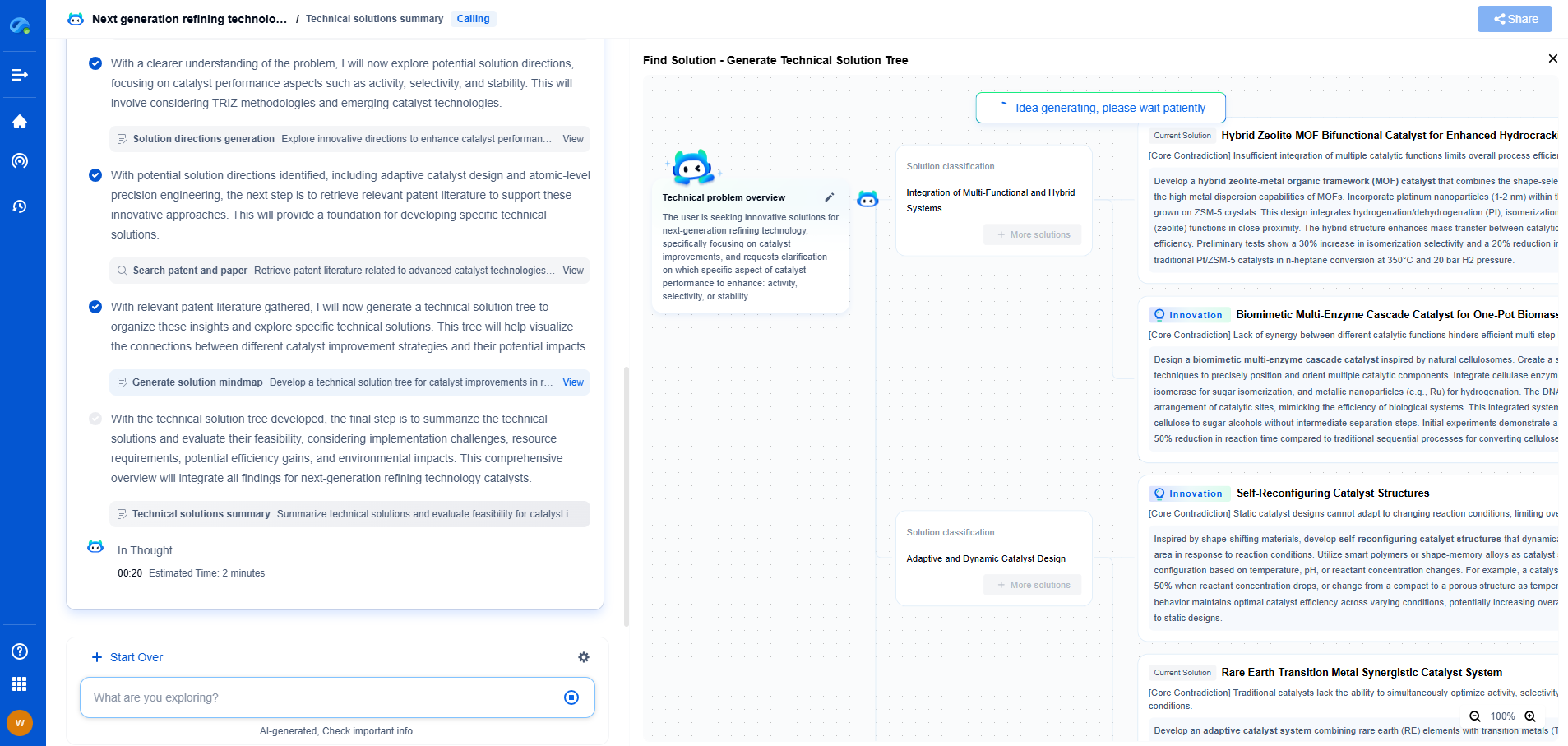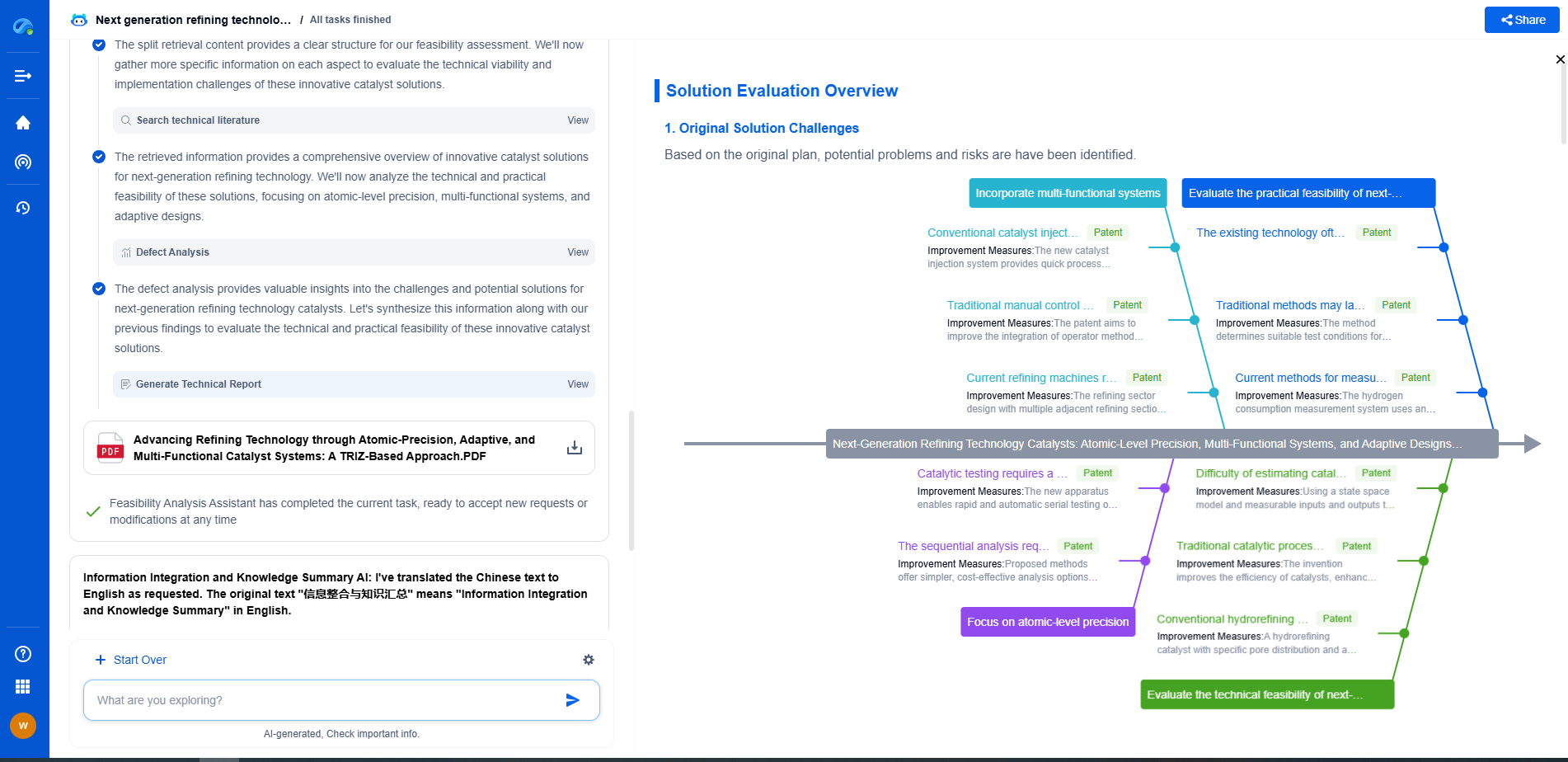4–20 mA vs Digital Output: Which Signal Type Is Better for Long-Distance Data Integrity?
JUL 17, 2025 |
In the world of industrial automation and process control, the integrity of data over long distances is crucial. As industries evolve, so do the methods of transmitting data from sensors to control systems. Two prevalent signal types in this domain are the traditional 4–20 mA analog signal and digital outputs. Each has unique attributes and potential drawbacks. This article explores the differences between these two signal types, assessing their suitability for maintaining data integrity over long distances.
Understanding 4–20 mA Signals
The 4–20 mA current loop has been a staple in the industry for decades. This analog signal is favored for its simplicity and reliability. The range of 4 to 20 milliamps represents the full scale of measurement, with 4 mA typically indicating the zero point and 20 mA indicating the full-scale measurement.
Advantages of 4–20 mA
One of the primary benefits of the 4–20 mA signal is its ability to maintain signal quality over long distances. Since the signal is transmitted as a current, it is less susceptible to voltage drop issues that can plague voltage-based signals over extensive wiring. Additionally, the inherent simplicity of the analog signal makes it immune to many types of electrical noise that can affect more complex systems.
Another advantage is the ease of troubleshooting. The live-zero of 4 mA ensures that any reading below this level indicates a fault in the system, such as a broken wire or a sensor failure.
Disadvantages of 4–20 mA
Despite its reliability, the 4–20 mA signal is not without its limitations. Being an analog signal, it is vulnerable to signal degradation due to electromagnetic interference (EMI) and radio frequency interference (RFI), though less so than voltage signals. Furthermore, the 4–20 mA loop can carry only a single variable, necessitating additional wiring for multiple measurements.
Exploring Digital Outputs
Digital signals, on the other hand, are relatively new compared to 4–20 mA systems. They transmit data in the form of binary code, allowing for more complex information to be conveyed over the same medium.
Advantages of Digital Outputs
Digital signals offer several advantages in terms of data integrity and transmission capability. Chief among these is their resilience against interference. Digital signals are less affected by EMI and RFI, making them highly reliable for long-distance transmission. They can also carry multiple data points within a single signal, allowing for more efficient communication between devices.
Additionally, digital outputs enable advanced diagnostics and error-checking mechanisms, allowing for better fault detection and system maintenance. This capability can enhance the overall reliability of the system, especially in environments where signal integrity is paramount.
Disadvantages of Digital Outputs
However, digital outputs are not without challenges. The complexity of these systems can lead to compatibility issues, particularly when integrating with legacy systems that predominantly use analog signals. Moreover, the initial setup and calibration of digital systems can be more complex and costly compared to the straightforward 4–20 mA loops.
Which is Better for Long-Distance Data Integrity?
When choosing between 4–20 mA and digital outputs for long-distance data integrity, the decision largely depends on the specific needs and constraints of the application.
For systems where simplicity, ease of maintenance, and proven reliability are paramount, the 4–20 mA current loop remains a viable and effective choice. Its ability to deliver consistent performance with minimal susceptibility to common interference makes it a go-to option for many industries.
Conversely, digital outputs are ideal for applications requiring high data throughput and advanced diagnostics. Their robustness against interference and capacity for transmitting diverse data sets make them suitable for modern, complex systems where data integrity is critical.
Conclusion
Ultimately, the decision between 4–20 mA and digital outputs hinges on the specific requirements of the application, the existing infrastructure, and future scalability needs. Both signal types have their strengths and weaknesses, but understanding these can help in making an informed decision that ensures long-term data integrity and system reliability.
Whether you’re developing multifunctional DAQ platforms, programmable calibration benches, or integrated sensor measurement suites, the ability to track emerging patents, understand competitor strategies, and uncover untapped technology spaces is critical.
Patsnap Eureka, our intelligent AI assistant built for R&D professionals in high-tech sectors, empowers you with real-time expert-level analysis, technology roadmap exploration, and strategic mapping of core patents—all within a seamless, user-friendly interface.
🧪 Let Eureka be your digital research assistant—streamlining your technical search across disciplines and giving you the clarity to lead confidently. Experience it today.
- R&D
- Intellectual Property
- Life Sciences
- Materials
- Tech Scout
- Unparalleled Data Quality
- Higher Quality Content
- 60% Fewer Hallucinations
Browse by: Latest US Patents, China's latest patents, Technical Efficacy Thesaurus, Application Domain, Technology Topic, Popular Technical Reports.
© 2025 PatSnap. All rights reserved.Legal|Privacy policy|Modern Slavery Act Transparency Statement|Sitemap|About US| Contact US: help@patsnap.com

